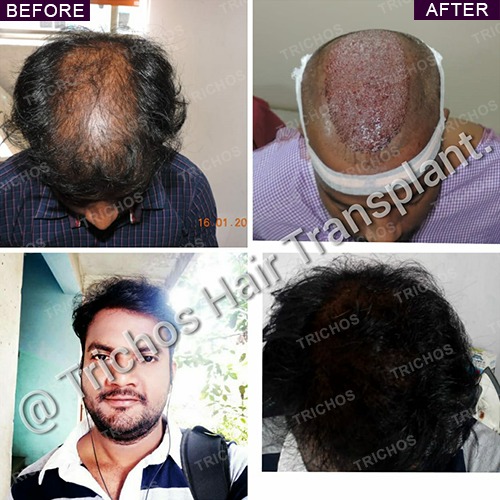Robotic Hair Transplant | Uses & Disadvantages
Using robotic hair restoration has now become a fad but how effective are they when it comes to planning the perfect hairline or using the FUE hair transplant technique or transplanting body or beard hair?
In this educational video, renowned trichologist, dermatologist and one of the top hair transplant experts in Hyderabad Dr John Watts explain the science, technology and working of the robotic hair restoration process.
He also explains in detail its advantages and disadvantages so that the viewers can take a call on whether they should opt for it.
Robotic Hair Restoration: Its workings
Robotic hair restoration technology has attracted the attention of hair transplant patients that can considerably reduce the burden and workload of a hair transplant surgeon.
In this technology, the patient has to remain in a fixed position (upside down). The stationary position is crucial to the working of the robotic arm as any change in the movement would change the angle of the punch and may cause damage to the scalp.
The sensors fixed in the robotic arm identify hair follicles and the angle at which the punch has to be used is aligned for the extraction of hair grafts, which are then manually removed.
“There are now advanced robotic arms that are also used in the hair grafts implantation process,” explains Dr John Watts.
Advantages:
The technology for robotic hair restoration is still evolving but there are certain advantages it provides to hair transplant surgeons. They include:
The surgeon gets relief from the marathon transplantation process as the robotic arm takes the heavy workload.
The hair graft extraction is precision-guided and the scope of errors is limited if the subject remains in a fixed position and the robotic arm is set with the correct parameters for graft extraction.
The exact depth and angle at which it has to be operated for extraction of hair grafts can be fixed.
Advantages:
Though the technology is new, Dr John Watts says that its disadvantages outnumber its advantages and asks viewers to be very cautious while opting for the technology as it is also a costly process.
The robotic hair restoration arm uses a punch with a wide diameter punch while extracting hair grafts that can leave a big scar on the scalp later on.
The graft transaction rate can be high with possibilities of graft wastage as they can get cut during the extraction process.
The robotic hair restoration arm is not too effective while removing hair grafts from the beard or body. It also struggles while removing curly hair as it gets confused about the angular positioning it is supposed to operate.
Hair transplantation using a robotic arm on the crown area gets tricky.
The machine is costly in its maintenance upkeep and occupies a lot of space in a hair transplant. This makes per graft cost high and the hair transplant plant patient has to pay more money as the burden is passed on to them.
In each session, not more than 1000-1500 hair grafts can be extracted using the robotic arm. This calls for multiple sessions and the cost of the hair transplant increases.
The robotic hair transplant arm can perform only a few steps in the FUE process.
As the head has to remain in a tightly-fixed position for a long time, the patient may feel discomfort in his neck.
In his conclusion, Dr John Watts says that in future, the robotic hair restoration technique may see a lot of advancements and improvise its existing features.
“However, at this stage, it is better if patients opt for manual hair transplantation by their surgeon,” he advises.
Trichos offers premium hair transplant solutions for a range of hair loss conditions. Call us today for more information!
Book an appointment for expert guidance


About
Causes
Alopecia
Restoration
Procedures
Locations
Disclaimer: While hair transplants are generally safe and effective, as with any medical procedure, there can be minimal and temporary side effects based on specific or underlying medical condition of the individual patient. Please consult in person with our qualified medical team at Trichos for a thorough assessment of your specific condition and individualized guidance on the potential risks and benefits associated with our hair restoration treatments.
Learn more about Medical Consent for Surgeries.



